Authors:
ABSTRACT
Aim
The purpose of this study was to determine the effect of different cavity disinfectants on microleakage of Class V resin-
based composite restorations in primary teeth.
Methods
Standard non-beveled Class V cavities were prepared on
50 human primary anterior teeth with the incisal and cervical margin placed on the enamel. The crowns were randomly divided into 6
groups. Four experimental groups of 10 teeth each, in which cavities were disinfected using the following solutions: 1) S. persica extract
(Ethanol 1 mg/ml); 2) 1.3 sodium hypochlorite (NaOCl); 3) 0.2 chlorhexidine gluconate (CHX), and 4) No solution
applied. Two control groups; 5 teeth each; 5) Negative control: filled cavity and entirely coated with nail varnish and 6) positive control:
empty cavity and without nail varnish coating. Each cavity in groups 1-5 were filled with Filtek Z350 XT Universal Restorative (3M Espe,
St. Paul, USA). All specimens were thermocycled for 500 cycles (5C/55C) and prepared for microleakage evaluation using a 2
methylene blue.
Results
For the experimental groups; there was no significant difference in dye penetration between the incisal and
cervical walls in all groups (P0.176). However comparing microleakage by location/walls showed a significant difference in dye
penetration between the incisal walls (P0.014) and cervical walls (P.045). CONCLUSIONS: None of the disinfectant
solutions in the experimental groups were able to prevent dye penetration. In comparison to chlorhexidine gluconate and sodium
hypochlorite; application of S. persica did not increase microleakage and was not detrimental to enamel and dentin adhesion using the
restorative technique and materials used in this study.
PLUMX METRICS
Publication date:
Keywords:
Issue:
Vol.16 – n.4/2015
Page:
Publisher:
Topic:
Cite:
Harvard: F. Salama, H. Balto, F. Al-Yahya, S. Al-Mofareh (2015) "The effect of cavity disinfectants on microleakage of composite restorations in primary teeth", European Journal of Paediatric Dentistry, 16(4), pp295-300. doi: https://www.ejpd.eu/wp-content/uploads/pdf/EJPD_2015_4_7.pdf
Copyright (c) 2021 Ariesdue

This work is licensed under a Creative Commons Attribution-NonCommercial 4.0 International License.
